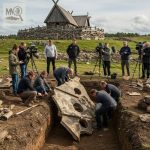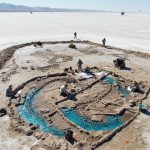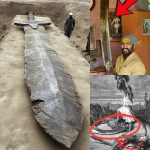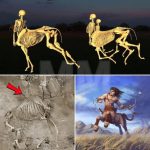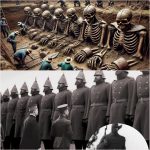Shocking 1860 Footage Reveals the Untold Story of the Longest Neck Family

Recently uncovered archival footage from 1860 has brought the mysterious Longest Neck Family back into the spotlight, offering historians, anthropologists, and the public an unprecedented glimpse into their lives. For decades, this family has been shrouded in myth, folklore, and sensationalized accounts from circus shows. Now, for the first time, moving images provide tangible insight into their extraordinary physiology, daily activities, and interactions within society.
A Rare Glimpse into History
The footage captures moments of everyday life: family members walking, interacting, and performing routine tasks. Their distinctive elongated necks, once a source of public curiosity and spectacle, are now seen in context, highlighting the human side of a family long objectified by sensational narratives. Beyond the spectacle, the film shows the dynamics of familial bonds, domestic routines, and the social environment in which they lived—offering a nuanced perspective missing from earlier accounts.

Scholars note that the clarity of the images allows detailed observation of physical attributes, posture, and mobility, providing valuable information for medical and genetic studies. Such data is invaluable for understanding historical human variation and the biological factors behind this rare condition.
Societal and Cultural Context
In the 19th century, families like the Longest Neck Family often faced public fascination mingled with discrimination. The circus and traveling shows exploited unique physical traits for entertainment, often exaggerating differences for financial gain. Yet, the archival footage shows moments of dignity and ordinary life, challenging narratives that reduced them solely to objects of curiosity.
Anthropologists studying the film are analyzing not only physiological features but also social interactions. The footage sheds light on how communities perceived the family, how they navigated societal attitudes, and how they maintained a sense of identity amid public scrutiny. This historical perspective allows for a richer understanding of 19th-century societal attitudes toward physical variation and human difference.

Scientific Insights
Modern geneticists and medical historians are studying the footage to explore hereditary traits, skeletal structure, and potential health implications. By combining visual analysis with historical records, researchers hope to uncover insights into the family’s condition and how it influenced their lifestyle, health, and social integration. The footage may also inform broader studies of human diversity and adaptation, offering lessons about the intersection of biology, culture, and history.
Implications and Reflections
The discovery of this 1860 footage raises profound questions about human variation, ethics, and the treatment of individuals with unique physical characteristics. It challenges us to reconsider sensationalized historical narratives and appreciate the lived experiences of those who existed outside the societal norm. By presenting the Longest Neck Family in their own context, the film humanizes individuals often reduced to myth or spectacle.
Conclusion
The 1860 footage of the Longest Neck Family is a groundbreaking historical and anthropological treasure. It provides unprecedented insights into their daily lives, familial relationships, and the social realities of 19th-century society. As scholars continue to analyze the film, it promises to reshape understanding of human variation, cultural attitudes, and the complex interplay between biology and society. Above all, it reminds us that behind extraordinary physiology lies the universality of human experience—love, resilience, and the struggle for dignity.

